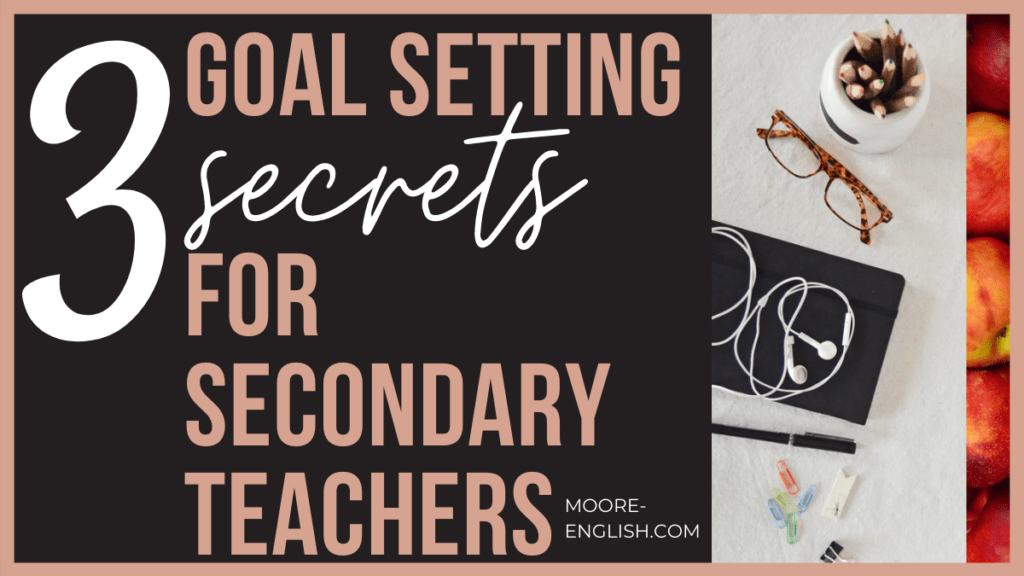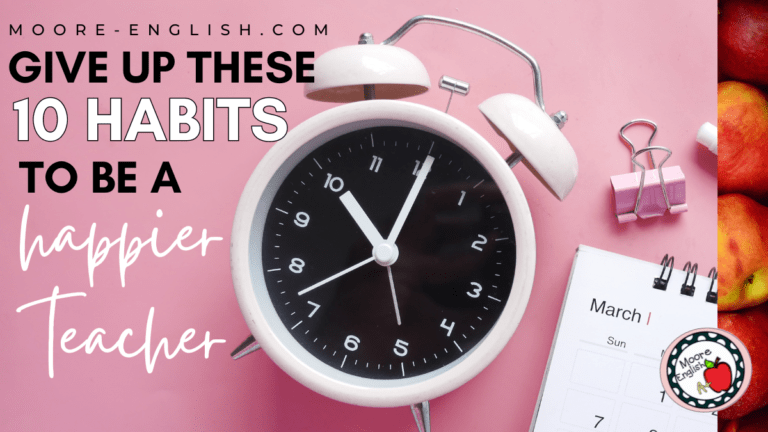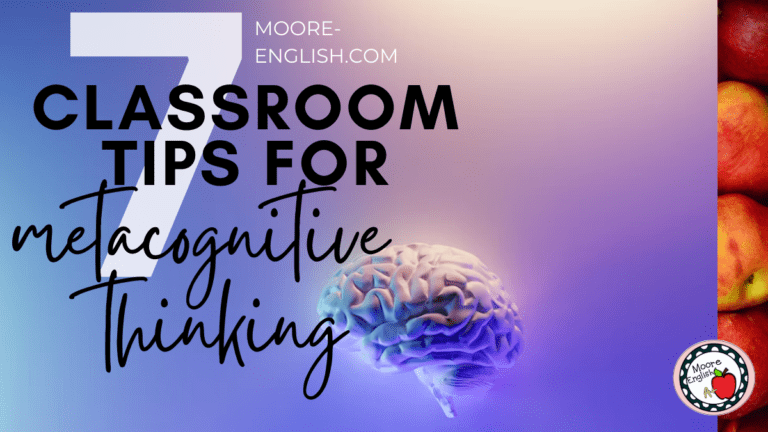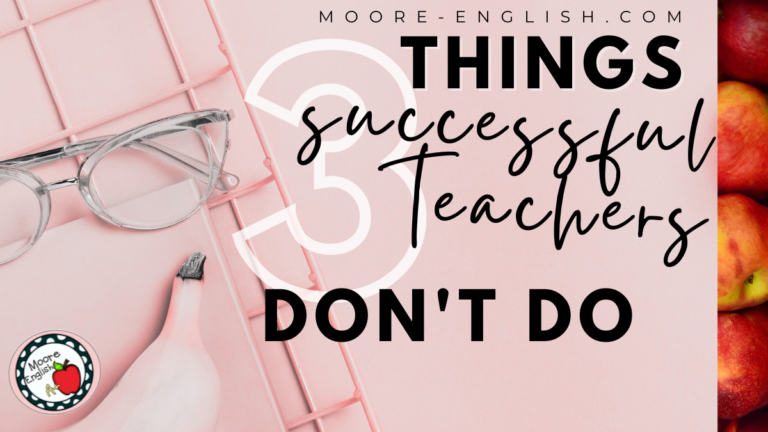As a student, I rolled my eyes when teachers said, “Fill out this goal sheet. We’ll keep track of your progress this year.” I knew my teachers were going to collect the forms, maybe glance at them, toss them in a drawer, and we’d never see or hear from our goals ever again.
Nevertheless, year after year, my teachers asked me to set goals. Why?
Well, I think it’s because they knew what ASCD knows: goal setting matters. The act of setting goals encourages student buy in, emphasizes a growth mindset, and supports differentiation.
So how can teachers make goal setting a meaningful process in the classroom? How do teachers prevent students (like me) from being compliant but apathetic?
Here’s how I make goal setting meaningful in my classroom:
This post this post may contain affiliate links. Please read the Terms of Use.
Goal Setting Secrets
1. Consistency: When my students set a goal, we revisit that goal on a regular basis. With my sophomores and juniors, we keep data sheets and graph our progress throughout the course, readjusting our goals each time. For my seniors, we use a simpler sheet (fewer bells and whistles), but we still re-evaluate our goals on a regular schedule.
2. Communication: My students do not face their goals in isolation. Every time we meet for a writing conference, my students bring their goal sheets. When I hand out grade checks, we talk about how a student’s grade matches his or her goals. I always mention goals at parent-teacher conferences, too. And every other week or so, I ask students to turn in an exit ticket reflecting on what more they need (or need to do) in order to meet their goals.
3. Celebration: In addition to keeping data sheets, my sophomores and juniors also have a data wall where we track trends. I only post class averages, but we discuss those trends before formative and summative assessments and then again afterwards. In addition to helping their students visualize their goals, this is good practice using images as the basis for inferences. Every time the class meets a threshold (say 75% of students earn an 85%), we celebrate. Praise their hard work. Most of the time there is no tangible reward, but even the smallest praise can make all the difference.
Sometimes I wonder how my own schooling experience would have been if my teachers had used some of these techniques. I still think I turned out all right in the end (just like Gatsby), but using goal setting in my classroom is one way I make sure all my students have a chance to succeed and to define success in their own terms.
Because I believe in the power of goal setting, I’m offering this ELA Goal Setting Freebie. Check it out. Try it with your students, and let me know how it goals.
What are your tips and tricks for making goals a meaningful part of your classroom? Let us know in the comments.


Photo by Debby Hudson on Unsplash









